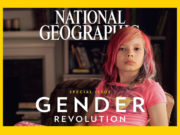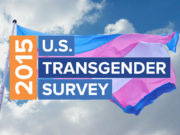Not that long ago the world operated under the assumption that gender and therein respective pronouns were merely binary. It was simply a male or female – he/him or she/her world. Then, people started to learn that, as with almost everything else, gender is not a simple black and white matter but truly runs the full spectrum of the rainbow. Folks initially started to discover that transgender people were out there and that’s a concept they’re still having some difficulty acclimating to, but now society is starting to realize even being transgender doesn’t begin to touch the true vastness and fluidity of gender and pronouns.
Preferred: We see or hear “preferred pronouns” or “preferred name” a lot when speaking about/to transgender or gender non-conforming people but this is not considered an appropriate way to phrase or preface pronouns/names. By using the word “preferred” it is implying that the person merely favors a name or pronoun above the use of others when this generally is not the case. The word ‘preferred’ should be dropped entirely and simply ask “what are your pronouns” or “what is your name.”
BINARY
The term binary is from the computer world where everything is either a 0 or a 1 and the world around us assumed gender was like this as well, Male or Female. When referring to someone who is content with the gender they were assigned at birth this would refer to a cis person (cis – meaning “on the same side of”).
Even among the trans population many still slip into this binary matrix by identifying as a trans MALE or a trans FEMALE while many will state that the simple fact of being trans removes them from the binary. That’s a debate for another day. We all know that male pronouns are he/him and female pronouns are she/her.
EXPANDED
Whether a person identifies as cisgender, transgender, or gender non-conforming there is an expanded list of gender pronouns.
The LGBTQIA Resource Center at UC Davis created this table to help illustrate not just an example of the alternative pronouns available but how to utilize them correctly within sentences.
 LGBTQIA Resource Center of UC Davis
LGBTQIA Resource Center of UC Davis
The LGBT Resource Center at the University of Wisconsin (Milwaukee) generated this graphic, which includes some additional pronouns and just goes to show how truly extensive pronouns can be.
Additionally, both of these resource pages offer wonderful resources that are worth exploring in more depth if you have the time.
GENDER NEUTRAL
Plenty of folks identify as gender non-conforming, non-binary, gender queer, gender fluid, and so on. Many of the pronouns listed above are gender neutral, meaning they can be used without implying the person you’re speaking to is either a male or a female specifically. Those who identify outside the binary have a wealth of options for pronouns now and, as we are learning, we can create what we need as it’s needed. A good portion of non-binary or non-conforming people may opt for the singular They/Them.
In exciting news for non-binary folks, Oregon and Washington DC now produce identification with X as a non-binary or ‘third gender’ option. While ‘third gender’ is not entirely correct, it does allow for a third option for those who are in the non-binary/non-confirming spectrum. For some startling statistics about non-binary people and the new changes to identifications, check out this article from USAToday.
BREAKING DOWN WALLS
Assuming a person’s gender and pronouns are not appropriate, and while society as a whole is dragging its feet on this matter, many other folks have already adapted. While it is impractical (and unsafe in many circumstances) to walk around all day, every day with a “My Pronouns Are” sticker or button, it’s perfectly practical to ask a person what pronouns they use. This is also a great way to break the ice while showing someone you respect them as a human being. No one expects perfection, but starting things off on the right foot is a sure way to make a TGNC person’s day and show them that you’re willing and able to try and to learn and we, in turn, will be happy to educate.
We are breaking down the gender binary, we’re breaking down societal norms, we’re breaking down communication gaps, and we’re breaking language limitations. There’s plenty of backlash to be expected, it’s already begun, but we are reshaping the world into a larger and yet more inclusive place.

































